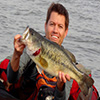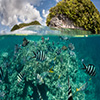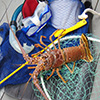Going on a fishing vacation with friends or family can be an enjoyable activity any time of the year. It is always recommended that you take the necessary precautions to ensure that your fishing trip is as safe as it is fun. The first thing that you can do is take a guided fishing class, which will teach you everything that a fisherman has to know about engaging in the sport. The next step is to go over some helpful safety tips when you are out on the water. Finally, it is absolutely paramount that every fisherman is familiar with the license to fish laws and regulations of Minnesota. These rules are designed to keep you and the local wildlife safe, so do not overlook them.
Fishing Classes
In the modern age, getting educated about fishing licenses and how to properly engage in fishing is easier than ever before. You have the option of attending local lectures and seminars in person with local athletic leagues. The option is also available to put your children in structured workshops tailored directly to the needs of novices. Minnesota residents can even look up all the necessary materials and information online for a more convenient experience.
In any case, access to fishing classes is wide and inexpensive. Programs are typically offered at a very low rate, and sometimes, you can find everything you need to know online, thus avoiding paying a single dollar for education on the different types of fishing in Minnesota.
For residents or visitors who would like to have a more personal experience regarding fishing classes, Minnesota offers excellent programs that teach everything you need to know. Whether it is casting your line or learning how to properly rig tackle, these programs have the needs of their students covered, especially Minnesota’s Fishing in the Neighborhood program and the very popular MinnAqua. Designed to instruct individuals on recreational angling, both of these programs place a strong focus on the importance of ecology and conservation in both standard and state park fishing. They partner with schools and youth groups in the community to spread awareness, employing interns and volunteers to help improve their waters.
The leaders of these fishing programs understand the challenges of a busy schedule, which is why they offer Minnesota residents access to online fishing guides and classes directly related to them, especially MinnAqua. Combining lessons and activities, the program has webinars and digital guides that provide an experience that brings students as close to a physical classroom as possible, while still providing all of the vital information and tips on fishing in the state of 10,000 lakes.
Safety
Given that fishing is a sport typically done in open water, safety should always be one of your main concerns. A fisherman can never be too careful when angling in the state of Minnesota, especially a novice fisherman. The sport has its fair share of dangers. There is always the chance of eye injury, hook impalement and even fish bites from the more aggressive species of fish. Additionally, numerous fishermen have died while engaging in the sport, mostly due to drowning, lightning strikes, heat stroke and, in colder weather, hypothermia. Fortunately, all of these issues can be avoided with the proper care and training.
For some helpful tips to consider on your next fishing trip, consult the guide below:
- Always carry a USCG-approved life jacket on your vessel for every single passenger on board. These jackets should be worn at all times for safety.
- Given the varied culture of Minnesota, it is important to check the short-term forecast before you plan or go on a fishing vacation.
- Make sure to wear the proper shoes to prevent slipping while you fish, regardless of whether you are angling on a boat or the shore.
- Use insect repellent during every trip, as bugs are common pests when fishing.
- Do not forget to bring a cell phone that is fully charged, along with any prescription medication that you normally take and some extra water for the fishing trip.
- Keep yourself hydrated during the trip.
- Be mindful of swift currents and do not stand on unstable surfaces when a current is strong.
- Wear multiple layers of clothing to protect from the sun or the cold, depending on the climate.
- As mentioned earlier, eye injuries are common. So always wear sunglasses or goggles.
- Hand injuries can also occur due to cuts from fins or teeth, so wear gloves.
- Notify the marina operator of your fishing plans, as well as a friend or family member, in case something goes wrong.
Laws & Regulations
What are the fishing regulations in Minnesota?The simple answer is that the state of Minnesota has many laws and regulations regarding the use of a license to fish within the state. These include everything from fish length restrictions (based on a given lake), daily possession limits and trespassing on marked land without permission. Consult the sections below for important information and visit our guide for more details.
Can I use bait when fishing in Minnesota?
Yes, if you have a fishing license, bait is allowed when engaging in the sport within MN boundaries. Live and dead bait are allowed and include:
- Worms.
- Night crawlers.
- Insects.
- Larva.
- Minnows (with restrictions).
- Leeches (with restrictions).
Take note that you cannot dispose of unused leeches or minnows in Minnesota waters. It is also prohibited to use game fish, goldfish or carp as bait.
Some activities you cannot participate in when fishing include:
- Dragging your boat anchor through aquatic vegetation with a motor-propelled boat.
- Chumming.
- Buying or selling game fish.
- Wasting a fish.
- Not removing drain plugs, bilges and livewells at the water access.
- Disposing of garbage, poisonous substances, chemicals or fishing lines in Minnesota waters.
- Possessing or transporting certain kinds of fish (such as white perch, ruffe or black carp).
- Transporting any live fish that is not bait.
- Engaging in the sport without a recreational fishing license.
- Entering legally marked land without the permission of the landowner.
Yes, certain practices are considered illegal as they pertain to fishing in Minnesota. These include:
- Fishing for a certain fish during its closed season.
- Noodling or snagging fish by hand.
- Leaving fishing rods with attached hooks unattended.
- Using any of the following to catch fish:
- Chemicals (other than fish scents)
- Devices that utilize springs
- Electricity
- Explosives
- Firearms
- Artificial lures (other than lighted artificial lures not containing mercury)
The answer to this question varies depending on your specific situation. For example:
- A fisherman can use up to three single- or multiple-pronged hooks at the end of a single fishing line.
- For fishermen using multiple hooks, the length from the first to the final hook must be a maximum of nine inches.
- Trout waters do not allow multiple hooks other than artificial lures or pieces of bait that have multiple hooks.
You can only use one fishing line during open season, unless fishing on waters that indicate otherwise.




